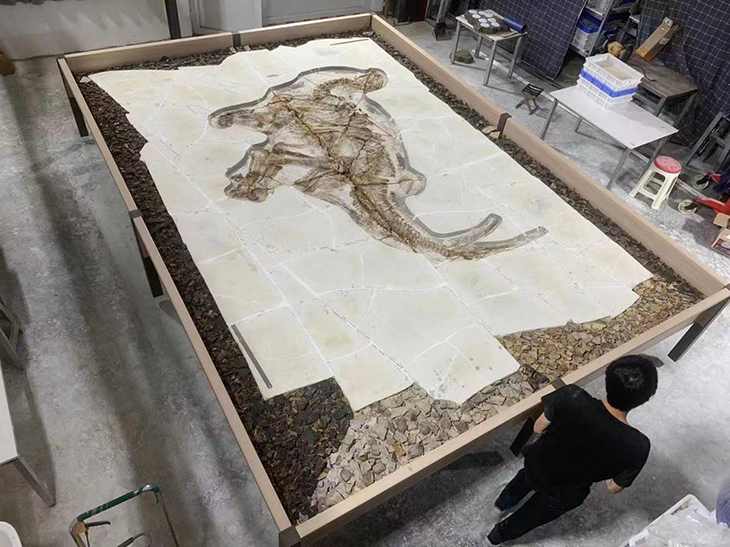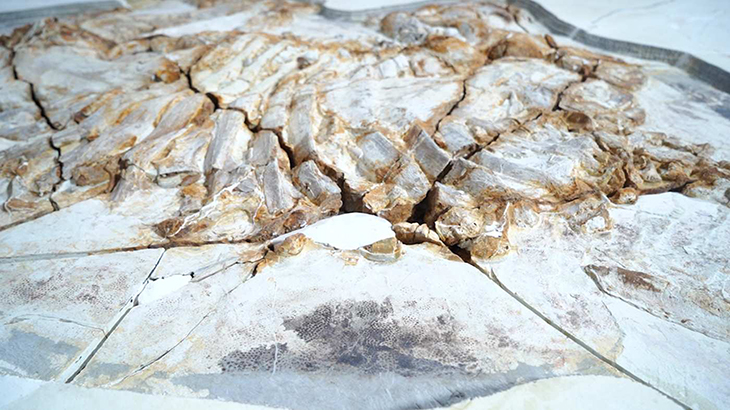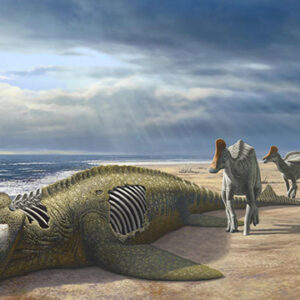
A momentous discovery has unfolded at one of Earth’s renowned dinosaur sites in China, revealing a complete Stegosaurus skeleton adorned with fossilized skin imprints.
This extraordinary find, made in 2017 in Fengning Manchu Autonomous County in Northern China’s Hebei Province, unveils not only the Stegosaur but also a primitive ancestor of the Triceratops. Years of meticulous excavations have brought to light their nearly intact skeletons, providing a rare glimpse into prehistoric life.
Measuring an impressive 5 meters in length, equivalent to around 15 feet, the Stegosaur astonishes researchers with its exceptional preservation, including the formation of skin mineralization alongside its bones. Gou Ying, an associate professor at the institute overseeing the discovery, highlights in their research paper that the Stegosaur’s skin exhibited a scaly texture.
This feature, akin to the skin or present-day squamates like lizards and snakes, served a crucial role in locking moisture within the dinosaur’s body, enabling it to adapt and thrive in arid climates.
A professor at the Institute of Geology and Paleontology of Linyi University, Zhang Fucheng, who also leads the research team explained, “The hard parts, such as bones and teeth of dinosaurs, are relatively easy to form fossils, but the soft parts, such as skin and muscle, are easy to rot, and the conditions for forming fossils are extremely harsh.”
The climatic conditions in Hebei during the mid-Cretaceous period were conducive to diverse life forms, characterized by lush forests and riverine ecosystems that once dominated the region, now transformed into vast grasslands. The fossilized remains of the Stegosaurus, with its intricate skin imprints, offer valuable insights into the adaptations and ecological niches occupied by these ancient creatures.

Unraveling the mysteries of this prehistoric giant’s demise reveals a sequence of serendipitous events. The Stegosaur likely met its end while quenching its thirst at the edge of a lake or river. Subsequently, external forces shifted its body from exposed land into deeper water.
The culmination came with the eruption of a nearby volcano, entombing the dinosaur and the body of water in successive layers of ash. This fortuitous sequence of events, captured in the fossilization process, provides scientists with a unique window into the circumstances surrounding the Stegosaur’s preservation.
Dating back to the Cretaceous period, approximately 130 million years ago, this Stegosaurus discovery marks the first of its kind in Northern China. The accompanying primitive ancestor of the Triceratops adds further significance, contributing vital information to fill gaps in the fossil record of China’s ceratopsids.
Zhang added, “The well-preserved bones of this specimen will provide important evidence for further study of the evolution of the primitive ceratopsid dinosaurs.”
What are your thoughts? Please comment below and share this news!
True Activist / Report a typo


